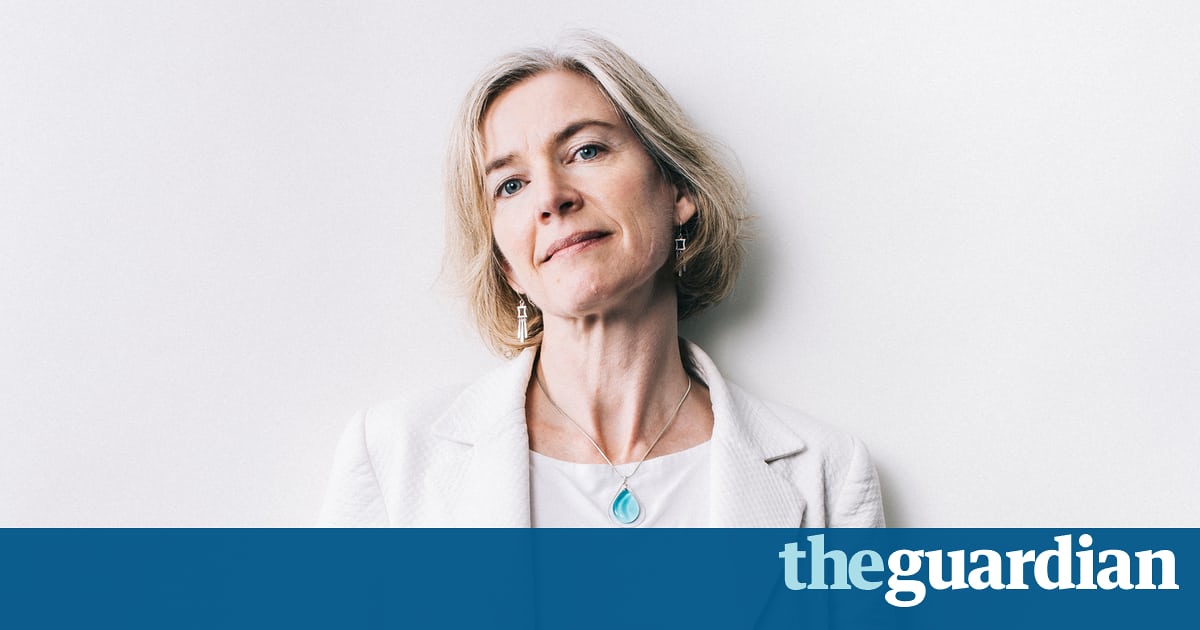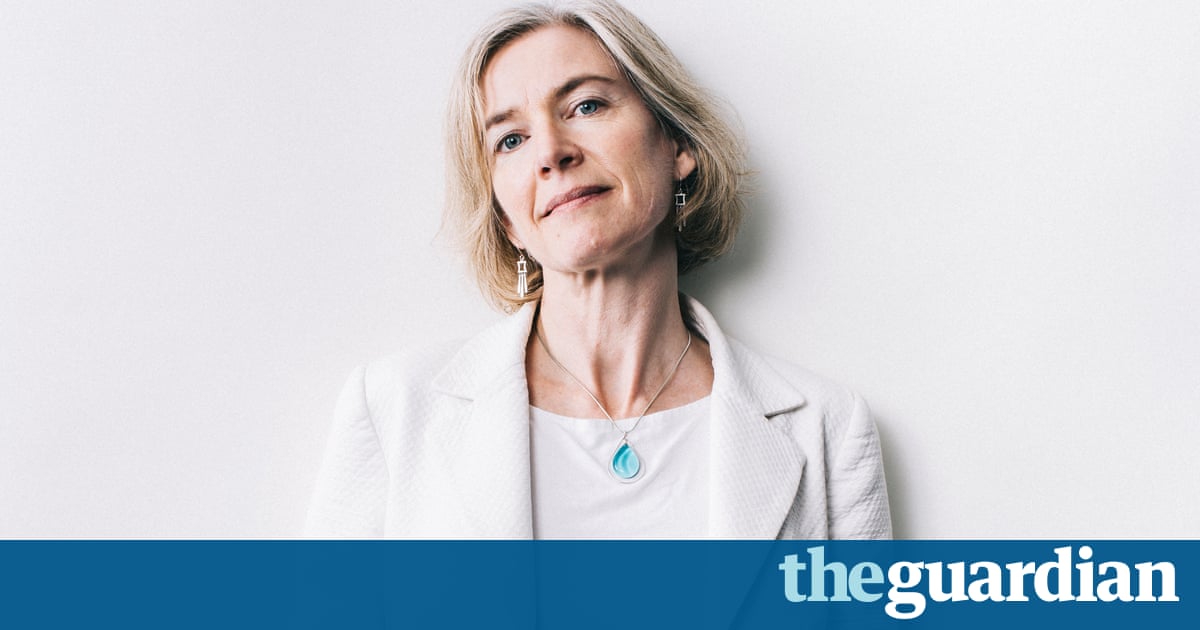Jennifer Doudna: I have to be true to who I am as a scientist

Crispr inventor Jennifer Doudna talks about discovering the gene-editing tool, the split with her collaborator and the complex ethics of genetic manipulation.

Jennifer Doudna, 53, is an American biochemist based at the University of California, Berkeley. Together with the French microbiologist Emmanuelle Charpentier, she led the discovery of the revolutionary gene-editing tool, Crispr. The technology has the potential to eradicate previously incurable diseases, but also poses ethical questions about the possible unintended consequences of overwriting the human genome.
Were you nerdy as a child? What got you hooked on science?
Yes, I was nerdy. My father was a professor of American literature in Hawaii and he loved books. One day I came home from school and he haddropped a copy of The Double Helix on the bed, by Jim Watson. One rainy afternoon I read it and I was just stunned. I was blown away that you could do experiments about what a molecule looks like. I was probably 12 or 13. I think that was the beginning of starting to think,Wow, that could be an amazing thing to work on.
You’ve spent most of your career uncovering the structure of RNA and never set out to create a tool to copy andpaste human genes. How did you end up working on Crispr?
I think you can put scientists into two buckets. One is the type who dives very deeply into one topic for their whole career and they know it better than anybody else in the world. Then there’s the other bucket, where I would put myself, where it’s like you’re at a buffet table and you see an interesting thing here and do it for a while, and that connects you to another interesting thing and you take a bit of that. That’s how I came to be working on Crispr it was a total side-project.
But when you first started your collaboration with Emmanuelle Charpentier, did you have a hunch you were on to something special?
We met at a conference in San Juan, Puerto Rico, and took a walk around the old town together. She was so passionate, her excitement was very infectious. I still remember walking down this street with her and she said: “Well I’m really glad you want to work with us on the mysterious [Cas9 the enzyme that snips DNA at the chosen location in the editing process].” It was this kind of electrifying moment. Even then I just had this gut feeling that this was something really interesting.
How important is personal chemistry in science collaborations?
It’s essential. Working in a lab is analogous to being in a high-school play: you’re rehearsing long hours, it’s crowded, there are stressful things that come up. It’s the same thing in science. Things never work as you think they will, experiments fail and so to have people around that really get along with each other is super important. Many collaborations dont work out, usually just because people’s interests aren’t aligned or people don’t really like working together.
The real frenzy around your work started in 2012, when you showed that Crispr-Cas9 could be used to slice up DNA at any site [of the DNA molecule] you wanted. Did you realise this was abig deal gradually or immediately?
It wasn’t a gradual realisation, it was one of those OMG moments where you look at each other and say holy moly. This was something we hadn’t thought about before, but now we could see how it worked, we could see it would be such a fantastic way to do gene editing.
After you demonstrated Crispr could edit bacterial DNA, two rival labs (Harvard and the Broad Institute) got there first in human cells. How come they beat you to it?
They were absolutely set up to do that kind of experiment. They had all the tools, the cells growing, everything was there. For us, they were hard experiments to do because its not the kind of science we do. What speaks to the ease of the system was that a lab like mine could even do it.
The Broad Institute won the latest round of an ongoing legal battle over patent rights they claim that it wasn’t obvious that Crispr could be used to edit human cells too. Where do you stand?
People have asked me over and over again: Did you know it was going to work? But until you do an experiment you don’t know that’s science. I’ve been lambasted for this in the media, but I have to be true to who I am as a scientist. We certainly had a hypothesis and it certainly seemed likea very good guess that it would.
There’s the patent dispute and you and Emmanuelle Charpentier also ended up pursuing rival projects to commercialise the technology. Are you all still friends?
If there’s a sadness to me about all of this and a lot of it’s been wonderful and really exciting it’s that I would’ve loved to continue working with Emmanuelle, scientifically. For multiple reasons that wasn’t desirable to her. I’m not blaming her at all she had her reasons and I respect her a lot.
The media loves to drive wedges, but we are very cordial. I was just with her in Spain and she was telling me about the challenges [of building her new lab in Berlin]. I hope on her side, certainly on my side, we respect each other’s work and in the end were all in it together.
In your book you describe a nightmare youhad involving Hitler wearing a pig mask, asking to learn more about your amazing technology. Do you still have anxiety dreams about where Crispr might leave the human race?
I had the Hitler dream and I’ve had a couple of other very scary dreams, almost like nightmares, which is quite unusual for an adult. Not so much lately, but in the first couple of years after I published my work, the field was moving so fast. I had this incredible feeling that the science was getting out way ahead of any considerations about ethics, societal implications and whether we should be worrying about random people in various parts of the world using this for nefarious purposes.
In 2015, you called for a moratorium on the clinical use of gene editing. Where do you stand on using Crispr to edit embryos these days?
It shouldn’t be used clinically today, but in the future possibly. That’s a big change for me. At first, I just thought why would you ever do it? Then I started to hear from people with genetic diseases in their family this is now happening every day for me. A lot of them send me pictures of their children. There was one that I can’t stop thinking about, just sent to me in the last 10 days or so. A mother who told me that her infant son was diagnosed with a neurodegenerative disease, caused by a sporadic rare mutation. She sent me a picture of this little boy. He was this adorable little baby, he was bald, in his little carrier and so cute. I have a son and my heart just broke.
What would you do as a mother? You see your child and he’s beautiful, he’s perfect and you know he’s going to suffer from this horrible disease and theres nothing you can do about it. Its horrible. Getting exposed to that, getting to know some of these people, it’s not abstract any more, it’s very personal. And you think, if there were away to help these people, we should do it. It would be wrong not to.
What about the spectre of designer babies?
A lot of it will come down to whether the technology is safe and effective, are there alternatives that would be equally effective that we should consider, and what are the broader societal implications of allowing gene editing? Are people going to start saying I want a child that’s 6ft 5in and has blue eyes and so on? Do we really want to go there? Would you do things that are not medically necessary but are just nice-to-haves, for some people? It’s a hard question. There are a lot of grey areas.
Are you worried about cuts to science funding, including to the National Institutes of Health (NIH) budget?
I am very concerned. Science funding is not a political football but in fact a down payment on discovery, the seed money to fund a critical step toward ending Alzheimers or curing cancer.
Researchers currently working on projects aimed at improving numerous aspects of our agriculture, environment and health may be forced to abandon their work. The outcome is that people will not receive the medical treatments they need, our struggle to feed our exploding population will deepen, and our efforts to manage climate change will collapse.
Over the long term, the very role of fundamental science as a means to better our society may come into question. History and all evidence points to the fact that when we inspire and support our scientific community we advance our way of life and thrive.
Were you disturbed when Trump tweeted, If U.C. Berkeley does not allow free speech and practices violence on innocent people with a different point of view NO FEDERAL FUNDS? in response to a planned alt-right speaker being cancelled due to violent protests on campus?
Yes. It was a confusing tweet since the university was clearly committed to ensuring that the event would proceed safely and first amendment rights were supported. Few expected the awful actions of a few to be met with a willingness from the highest office to deprive more than 38,000 students access to an education.
You’ve spoken at Davos, shared the $3m 2015 Breakthrough prize, been listed among the 100 most influential people in the world by Time magazine. Are you still motivated about heading into the lab these days?
Yesterday I was getting ready to go to a fancy dinner. I was in a cocktail gown and had my makeup on and my hair done, but I wanted to talk to a postdoc in my lab about an experiment he was doing, so I texted him saying can we Skype? It was 8am in California, I was over here [in the UK] in my full evening gown, talking about the experiment. That’s how nerdy I am.
A Crack in Creation: The New Power to Control Evolution by Jennifer Doudna and Sam Sternberg is published by The Bodley Head (20). To order a copy for 17 go to bookshop.theguardian.com or call 0330 333 6846. Free UK p&p over 10, online orders only. Phone orders min p&p of 1.99